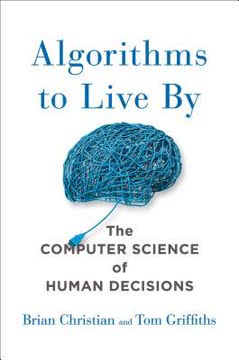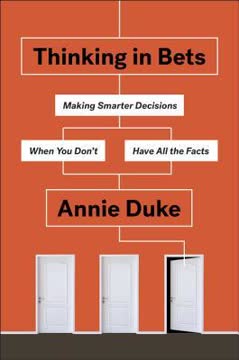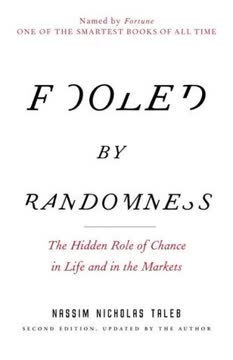Key Takeaways
1. Mental models are powerful tools for understanding the world
"If the facts don't hang together on a latticework of theory, you don't have them in a usable form."
Mental models are conceptual frameworks for interpreting the world around us. They help us simplify complex situations, make predictions, and guide decision-making. Some key mental models include:
- Critical mass: The tipping point at which a system rapidly changes
- Inertia: Resistance to change in physical and social systems
- Network effects: How value increases as more people join a network
- Compounding: Small changes accumulating over time to create large effects
By developing a diverse toolkit of mental models from various disciplines, we can approach problems from multiple angles and avoid the trap of seeing everything as a nail when we only have a hammer. The goal is to create a "latticework" of mental models that we can apply flexibly to new situations.
2. Overcome cognitive biases to make better decisions
"You must not fool yourself—and you are the easiest person to fool."
Our brains are prone to systematic errors in thinking called cognitive biases. Some common biases include:
- Confirmation bias: Seeking information that confirms existing beliefs
- Availability bias: Overestimating the likelihood of events we can easily recall
- Anchoring: Relying too heavily on the first piece of information encountered
- Loss aversion: Feeling losses more strongly than equivalent gains
To combat these biases, we need to:
- Be aware of our tendency towards biased thinking
- Actively seek out disconfirming evidence
- Use structured decision-making processes
- Cultivate intellectual humility
By recognizing and mitigating our cognitive biases, we can make more rational and effective decisions across all areas of life.
3. Understand the dynamics of complex systems and unintended consequences
"Anything that can go wrong, will go wrong."
Complex systems often behave in counterintuitive ways, leading to unintended consequences when we intervene. Key concepts include:
- Feedback loops: How systems reinforce or balance themselves
- Emergence: Complex behaviors arising from simple rules
- Nonlinearity: Small changes leading to disproportionate effects
To navigate complex systems:
- Look for interconnections and indirect effects
- Consider multiple time horizons
- Expect the unexpected and plan for contingencies
- Start with small experiments to learn system behavior
Understanding these dynamics helps us anticipate potential pitfalls and design more robust solutions in fields ranging from public policy to business strategy.
4. Apply probability and statistics to navigate uncertainty
"The most important questions of life are indeed, for the most part, really only problems of probability."
Probabilistic thinking is essential in an uncertain world. Key statistical concepts include:
- Normal distribution: The bell curve describing many natural phenomena
- Regression to the mean: Extreme outcomes tend to be followed by more average ones
- Bayesian reasoning: Updating beliefs based on new evidence
- Law of large numbers: Larger samples more accurately reflect the underlying population
To improve probabilistic reasoning:
- Look for base rates and reference classes
- Consider multiple possible outcomes
- Update beliefs incrementally with new information
- Be wary of small sample sizes and selection bias
By embracing uncertainty and thinking probabilistically, we can make better predictions and decisions in complex, random environments.
5. Master decision-making frameworks for optimal choices
"You can do anything, but not everything."
Effective decision-making requires structured approaches. Key frameworks include:
- Cost-benefit analysis: Weighing pros and cons quantitatively
- Decision trees: Mapping out possible outcomes and their probabilities
- Opportunity cost: Considering what we give up by choosing one option
- Expected value: Probability-weighted average of all possible outcomes
To improve decision-making:
- Clearly define the problem and objectives
- Generate multiple alternatives
- Gather relevant information and assess uncertainties
- Evaluate trade-offs and make reasoned choices
- Review and learn from outcomes
By applying these frameworks consistently, we can make more rational and effective decisions in both personal and professional contexts.
6. Navigate conflicts and negotiations strategically
"If you chase two rabbits, both will escape."
Conflicts and negotiations require understanding game theory and human psychology. Key concepts include:
- Prisoner's dilemma: The tension between cooperation and self-interest
- Nash equilibrium: A stable state where no player can unilaterally improve their position
- BATNA: Best Alternative To a Negotiated Agreement
- Win-win solutions: Finding mutually beneficial outcomes
Strategies for successful negotiations:
- Prepare thoroughly and understand all parties' interests
- Focus on interests, not positions
- Generate multiple options for mutual gain
- Use objective criteria to evaluate options
- Build relationships and trust for long-term success
By approaching conflicts strategically, we can find more constructive resolutions and create value for all parties involved.
7. Unlock human potential through effective leadership and culture
"Leadership is unlocking people's potential to become better."
Great leaders create environments where people thrive. Key leadership concepts include:
- Growth mindset: Believing abilities can be developed through effort
- Radical candor: Caring personally while challenging directly
- Psychological safety: Creating an environment where people feel safe to take risks
- Intrinsic motivation: Tapping into people's internal drives for autonomy, mastery, and purpose
To build high-performing teams:
- Set clear vision and expectations
- Provide regular feedback and opportunities for growth
- Foster a culture of trust and open communication
- Align individual strengths with organizational needs
- Celebrate successes and learn from failures
By focusing on developing people and creating a positive culture, leaders can unlock the full potential of their teams and organizations.
8. Develop sustainable competitive advantages in markets
"The only way to generate outstanding returns is to be right and [contrarian]."
Sustainable competitive advantages create long-term success in markets. Key concepts include:
- Network effects: Products becoming more valuable as more people use them
- Economies of scale: Reducing costs as production increases
- Brand loyalty: Customers preferring familiar products and services
- Intellectual property: Protecting unique ideas and innovations
Strategies for building competitive advantages:
- Identify and focus on core competencies
- Invest in research and development
- Build strong relationships with customers and suppliers
- Create high switching costs for customers
- Continuously adapt to changing market conditions
By developing and maintaining sustainable competitive advantages, businesses can create lasting value and outperform competitors over the long term.
Last updated:
FAQ
What's Super Thinking: The Big Book of Mental Models about?
- Focus on Mental Models: The book by Gabriel Weinberg and Lauren McCann explores mental models as frameworks for understanding and navigating complex situations. These models are essential for improving decision-making.
- Super Models for Better Thinking: It introduces "super models," which are broadly useful mental models that enhance critical thinking and informed decision-making.
- Practical Applications: The authors provide examples and applications of these models across various disciplines, equipping readers with tools to tackle everyday challenges.
Why should I read Super Thinking: The Big Book of Mental Models?
- Improved Decision-Making: The book offers a toolkit of mental models that can enhance decision-making skills by allowing you to bypass lower-level thinking.
- Multidisciplinary Approach: Drawing from multiple fields, it provides a holistic understanding of complex issues, making it relevant for a wide audience.
- Practical Frameworks: The authors present actionable strategies that can be implemented immediately in personal and professional life.
What are the key takeaways of Super Thinking: The Big Book of Mental Models?
- Mental Models Matter: Understanding and internalizing mental models can improve your ability to analyze situations and make better decisions.
- Avoiding Common Pitfalls: The book discusses cognitive biases and mental traps, such as confirmation bias and the sunk-cost fallacy, that hinder effective thinking.
- Incremental Progress: Emphasizes compounding knowledge and skills over time, suggesting that small, consistent efforts lead to significant long-term benefits.
What are some important mental models discussed in Super Thinking: The Big Book of Mental Models?
- Critical Mass: Refers to the point at which an idea or technology gains enough momentum to become widely adopted, helping identify when to invest in trends.
- Opportunity Cost: Every choice has a cost, which is the value of the best alternative not chosen, encouraging evaluation of decisions based on potential benefits.
- Eisenhower Decision Matrix: A tool for prioritizing tasks based on urgency and importance, helping focus on what truly matters.
How can I apply the concepts from Super Thinking: The Big Book of Mental Models in my daily life?
- Identify Your North Star: Establish a guiding vision or mission statement to prioritize activities and stay focused on long-term goals.
- Practice Deep Work: Allocate uninterrupted time for important tasks, enhancing productivity and creative problem-solving.
- Use the Eisenhower Matrix: Regularly assess tasks to determine urgency and importance, ensuring effective time allocation.
What is the significance of the concept of "critical mass" in Super Thinking: The Big Book of Mental Models?
- Threshold for Change: Critical mass is the point where an idea gains enough support to become mainstream, helping identify when to invest in new trends.
- Tipping Points: Small changes can lead to significant shifts in behavior or adoption, allowing leverage of growth opportunities.
- Network Effects: As more participants join a network, its value increases, guiding strategies for building communities or networks.
What are some common cognitive biases mentioned in Super Thinking: The Big Book of Mental Models?
- Confirmation Bias: Favoring information that confirms existing beliefs while ignoring contradictory evidence, affecting objectivity.
- Sunk-Cost Fallacy: Continuing investment in a project due to resources already spent, rather than evaluating current viability.
- Availability Heuristic: Overestimating the importance of readily available information, often influenced by recent events or media coverage.
How does Super Thinking: The Big Book of Mental Models suggest overcoming procrastination?
- Commitment Strategies: Making commitments with penalties for breaking them creates accountability and encourages goal follow-through.
- Time Management Techniques: Implementing strategies like timeboxing or scheduling deep work sessions helps maintain focus and reduce procrastination.
- Understanding Present Bias: Recognizing the tendency to prioritize immediate rewards over long-term goals aids in making better choices.
What is the "Eisenhower Decision Matrix" and how can it help me?
- Task Prioritization Tool: Categorizes tasks into four quadrants based on urgency and importance, helping focus on what truly matters.
- Improved Time Management: Ensures more time is spent on important, non-urgent tasks that contribute to long-term goals.
- Avoiding Distractions: Identifies tasks that seem urgent but are not important, allowing delegation or elimination.
How does Super Thinking: The Big Book of Mental Models address decision-making under uncertainty?
- Understanding Uncertainty: Emphasizes that uncertainty is natural and encourages using mental models to navigate it effectively.
- Probability and Statistics: Highlights the importance of using these tools to inform decisions, while acknowledging their limitations.
- Critical Evaluation of Claims: Advises seeking systematic reviews and meta-analyses to ensure conclusions are based on robust evidence.
What is the replication crisis mentioned in Super Thinking: The Big Book of Mental Models?
- Definition of the Replication Crisis: Refers to the issue of many scientific studies being non-replicable, questioning their validity.
- Causes of the Crisis: Includes publication bias and methodological flaws, emphasizing the need for transparency and rigorous research.
- Skepticism Towards Isolated Studies: Encourages skepticism of isolated studies and understanding the broader research context for informed conclusions.
What are some effective strategies for building a high-performing team in Super Thinking: The Big Book of Mental Models?
- Understanding Individual Strengths: Recognizing and leveraging unique strengths of team members allows for better role assignments.
- Creating a Supportive Culture: Establishing clear values and norms fosters collaboration and innovation within teams.
- Encouraging Deliberate Practice: Implementing regular feedback and growth opportunities enhances skills and team performance.
Review Summary
Super Thinking is a comprehensive collection of mental models from various disciplines, aimed at improving decision-making and problem-solving skills. While praised for its breadth and accessibility, some reviewers found it overwhelming and lacking depth. The book's storytelling approach and real-life examples were appreciated, though some felt it was too business-focused. Opinions varied on its usefulness, with some finding it life-changing and others seeing it as a rehash of familiar concepts. Overall, it's considered a valuable reference guide for those interested in expanding their thinking toolkit.
Similar Books










Download PDF
Download EPUB
.epub digital book format is ideal for reading ebooks on phones, tablets, and e-readers.






